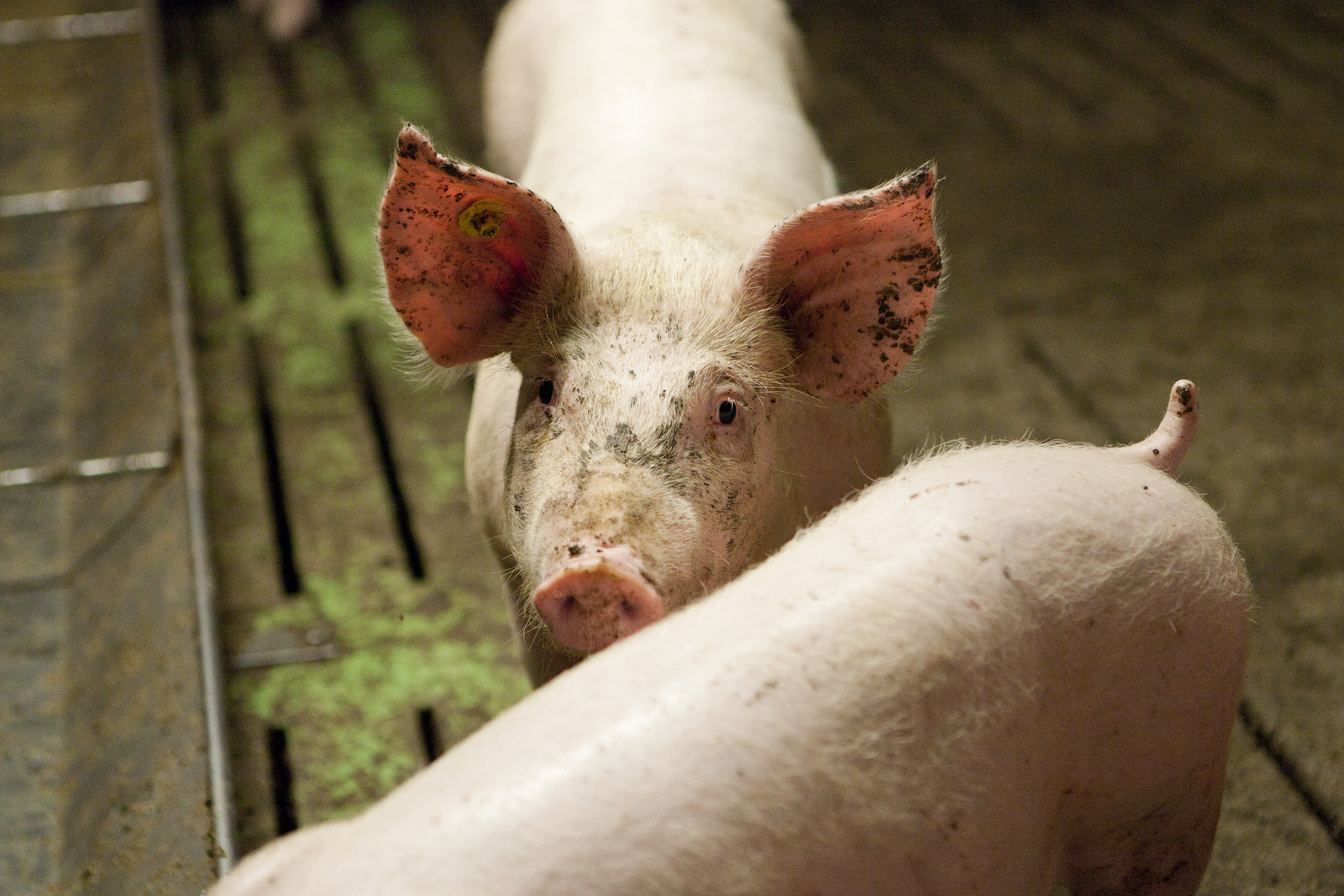Protected sodium butyrate to fight Salmonella

Prevention of Salmonella in the ?livestock chain benefits both animal and human health. The use of sodium butyrate has been shown to be an effective tool to reduce the ?colonisation and excretion of this pathogen in fattening pigs.
Salmonella spp. cause tens of millions of infections in humans, and several hundred thousand deaths per year, which makes it the most common foodborne disease (WHO). Pig meat is considered the second most important source of these salmonellosis cases in industrialised countries. Control of pig salmonellosis and other bacterial enteric diseases have been traditionally carried out via antibiotics, but their use at sub-therapeutic doses (as growth promoters) may have contributed to the development and spread of antibiotic resistance, which are now a serious public health concern. Thus, in the last years, their use as disease preventatives has been forbidden in EU. The use of organic acids or their salts is considered an alternative tool that may help in the control of Salmonella infection. It may reduce the number of pathogenic enteric bacteria when added to the feed or drinking water.
SCFA use in poultry
Short chain fatty acids (SCFA) are commonly used in the poultry industry as a tool to combat Salmonella spp. Apart from their antimicrobial properties at high concentrations, low concentrations of butyrate (a specific SCFA) can decrease intestinal colonisation by Salmonella Enteritidis in poultry, mediated by their influence on virulence gene expression (Van Immerseel et al., 2004, 2005; Gantois et al., 2006). As SCFA are usually rapidly metabolised by the microbiota of the gut and absorbed by epithelial cells along the gastro-intestinal tract (Van Immerseel et al., 2006; Louis et al., 2007), the supplemented fatty acids should be protected from the intestinal environment until they reach the major sites of colonisation by Salmonella spp., namely the ileum, caecum and colon.
Reduce the colonisation with butyric acid
A trend for decreased intestinal Salmonella load and bacterial shedding in pigs was shown using supplemented coated butyric acid, but not using supplemented uncoated butyric acid (Boyen et al., 2008), as also previously described in poultry (Van Inmmerseel et al., 2006; Fernández-Rubio et al., 2009). The effect of a protected form of 70% sodium butyrate* after a Salmonella Typhimurium oral challenge in piglets, was studied and the results demonstrated that the addition of GUSTOR BP70 at 3 kg/t of feed was able to reduce the colonisation and excretion of this pathogen under experimental conditions (ASAS Joint Annual Meeting 2014). These positive results encouraged us to study further its efficiency to prevent Salmonella spp. infections under field conditions.
Study in fattening pigs
To assess the level of Salmonella shedding and exposure after the addition of protected sodium butyrate to the regular diet of fattening pigs. For this purpose a field trial was carried out by researchers from the “Department of Animal Pathology” of the University of Zaragoza and the “Agrifood Research and Technology Centre of Aragon”. The study was carried out in a commercial Salmonella-infected fattening unit (8 pens, 110 pigs). Feed with 70% sodium butyrate protected with vegetable fat (3 kg/t) was administrated to animals from four randomly selected pens (approx. 50 animals) throughout the whole fattening period (approx. four months) (Treatment group -TG-). Pigs from the remaining four pens were fed with regular diet without the additive (Control group -CG-). Individual serum and faecal samples were collected at 30, 60, 90 days of the fattening period and at slaughter. Bacteriology on faecal samples was performed following the ISO 6579:2002 protocol. Serum samples were analysed by means of an indirect ELISA (Herdcheck Salmonella, IDEXX Laboratories) and three cutoff values were used (OD% ≥10, ≥20 and ≥40). Chi-squared analyses were performed to compare microbiological and serological results between both groups at different period times. A difference was considered significant when the one-tail P-value was ≤0.05. In addition, a repeated measures analysis (STATA software, xtmixed command) was used to estimate differences in mean OD% values in each group, after taking into account sampling times and the interaction treatment*time.
Reduced shedding
The levels of shedding were significantly lower for the treatment group (with BP70) when compared to the control group for all the samplings but the second one (60 days) (Figure 1). No significant differences between both groups were observed when cut-off values of OD% ≥10 or %OD ≥20 were used. However, when OD% ≥40 was considered, significant differences in seroprevalence were observed for the sampling just before slaughter between the CG and TG (89.6% vs. 48%, respectively). Overall, a lower mean OD% value (Figure 2) was observed for samplings at 60 and 90 days of fattening , and at slaughter in the TG compared to the CG (71%, 66%, 46% vs. 88%, 87%, 83%, respectively).
Conclusions
The results indicate that the use of protected sodium butyrate at 3 kg/t may reduce the shedding of Salmonella spp. under this farm conditions, and therefore the risk of contact of the animals with this pathogen, as suggested by serological results. Feed supplementation with protected sodium butyrate could be considered a useful complementary tool for the control of pig salmonellosis, along with good hygiene and farm biosecurity practices.
*GUSTOR BP70, NOREL S.A., Spain











